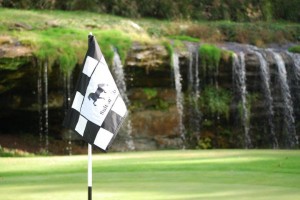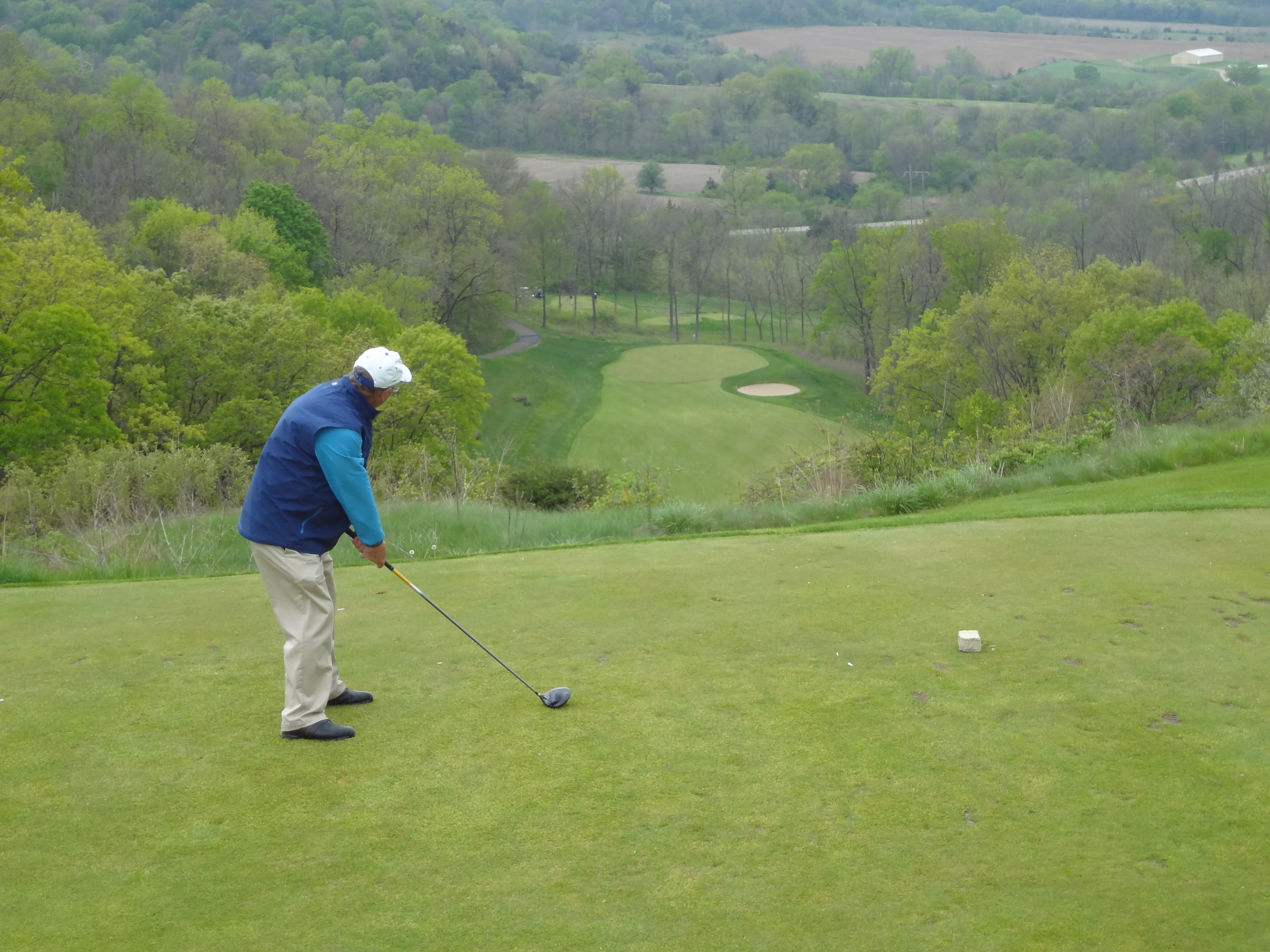Stacked sod-wall bunkers are an extreme rarity at Chicago courses, but they won’t be as much a mystery after owner Jim McWethy re-opens his Mistwood course in Romeoville. That’ll happen for the course’s members and permanent tee time holders on Saturday (JUNE 2).
Michigan-based course architect Ray Hearn incorporated 19 such bunkers into his new design, and he admits that the new bunkers will overshadow the numerous other changes he made at the public facility that annually hosts the Illinois Women’s Open.
“Nothing comes close to the glory of these stacked sod-wall bunkers,’’ he said. “In Chicago you want to set yourself apart, and this alone will do it. There’s nothing like this at any other Chicago course.’’
Hearn believes two other courses have stacked sod-wall bunkers, the main one being Conway Farms in Lake Forest. The site of the 2013 BMW Championship on the PGA Tour, Conway has three such bunkers. Another course – Hearn isn’t sure which one – has one.
Overall, Hearn substantially toughened and lengthened the course. The old version measured 6,701 yards, and the new one is 7,028 from the very back tees, some of which won’t be used all that much. The slope increased from 140 to 144 and the rating from 73.0 to 74.7 when Chicago District Golf Assn. officials made their visit to the new layout.
The course, which will open to the general public in mid-June, will produce a new challenge for the Illinois Women’s Open entrants, who will compete in the traditional 54-hole competition on July 25-27.
U.S. Open enters sectional stage
Village Links of Glen Ellyn will host Chicago’s sectional qualifier for the U.S. Open on Monday. The 48-man field will send its top finishers to the U.S. Open proper at Olympic Club in San Francisco, but the number of berths available hasn’t been determined yet.
PGA Tour players Tom Pernice and Tim Herron and Illinois coach Mike Small are the biggest names in the Village Links field, but Burr Ridge’s Bennett Blakeman bears watching, too. He qualified for the 2010 U.S. Open as an amateur and the 2011 version as a professional.
Others in the field include Brad Benjamin, the 2009 U.S. Amateur Public Links champion, and four ex-Illinois Amateur winners – Gary March (1986), Zach Barlow (2008), Vince India (2010) and Brad Hopfinger (2011). India will hit the first tee shot in the 36-hole elimination at 7 a.m. The second round begins at noon.
Switching stations
The Golfers on Golf radio show begins its 15th season on June 3, but it’ll have a different time slot and be heard on two stations instead of one.
The new home base is WSBC (1240-AM) and the show will be simulcast on WCFJ (1470-AM). It had been broadcast at 6 p.m. on Mondays of WJJG (1530-AM). Now it’ll be heard from 10-ll a.m. on Sundays. Mike Munro, Ed Stevenson, Bill Berger and Rory Spears will all return as the on-air talent for a 17-week run that will conclude on Sept. 23.
Here and there
Spain’s Carlota Ciganda, a former Arizona State golfer, won last week’s nearest sectional qualifier for next month’s U.S. Women’s Open at Wisconsin’s Blackwolf Run course by 11 shots. Only two from that sectional, held at Big Foot in Fontana, WI., qualified to play at Blackwolf Run, with Purdue’s Junthima Gulyanamitta beating ex-Illinois Women’s Open champion Aimee Neff in a playoff for the second spot….Medinah Patriot Day, a benefit for Illinois military families, will be held on Tuesday over the club’s Nos. 1 and 3 courses…..Kewanee’s Tom Miler added the CDGA Senior Amateur to his title collection this summer last week. He had previously won the Illinois State Public Links tourney. Taylorville’s Dave Ryan finished second in both….Entry deadline is 5 p.m. Friday for the Illinois Open. All professionals and amateurs with handicaps of 10 or less are eligible to compete in one of the seven qualifying rounds for the July 16-18 tourney proper at The Glen Club in Glenview….New management has decided to rename what was the Crystal Lake Golf Learning Center, located across the street from the Prairie Isle course. It’s now Fore Seasons Golf Learning Center…..Chuck Mills, North Chicago High School’s first football coach, will join his players from the 1955 team at an outing June 8 at Glen Flora in Waukegan.


